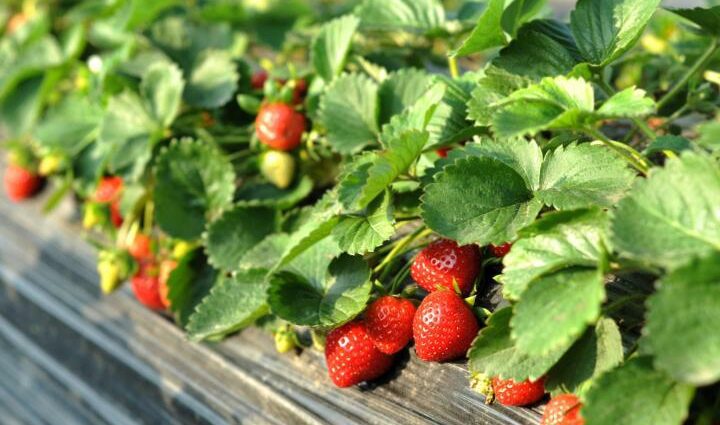Contents
Strawberries: growing and care
The cultivation of remontant strawberries is not particularly difficult; it practically does not differ from the usual care requirements. But still there are some recommendations that will help to further increase the yield and quality of the fruit.
Strawberries: growing and care
The soil for it must be prepared in advance – a year before the intended planting. We plant green manure in the selected area. It can be peas, beans, clover, lupine. They will saturate the earth with nitrogen.
Repairing strawberries: growing and caring are no different from the usual
Improving the quality of the crop is possible with the following care rules:
- the plant will tolerate partial shade normally, but still the best place for it is open and well-lit. Fruit formation will be faster;
- if it was not possible to plant green manure, you need to add rotted manure, wood ash and potash fertilizers to the soil. Dig to a depth of 40 cm;
- the soil should be slightly acidic, light and breathable. It must retain moisture and be loose;
- in early April, you need to cover the strawberry bed with plastic wrap to create the effect of a greenhouse. So the berries will ripen faster and the last fruiting will not occur during the first frosts.
The covered berry ripens 2-3 weeks earlier. You can do this in the fall, so that the harvest is greater. If you wish, you can not stretch the fruiting for the whole season, but leave it for September. To do this, remove all flowers in the spring. In the fall, the harvest will be doubled.
Features of growing and care: planting remontant strawberries
Planting strawberries correctly will help ensure plant health and a bumper crop. There are several rules for this:
- this procedure falls on August. Bushes are placed at a distance of 30 cm in one row, 60 cm between rows;
- newly planted plants need to be freed from flower stalks, this must be done several times so that the rosette first takes root and takes root, and then directs forces to the formation of flowers and fruits;
- after planting and throughout the season, regular watering is necessary, as well as loosening the soil and removing weeds. For the next spring, during the flowering period, do not allow the soil to dry out;
- the roots of the plant are close to the surface. Before the onset of cold weather, they need to be prepared for wintering and shelter should be made. It should be mulch made from rotted manure, peat or compost.
Fertilize the soil in spring and autumn after harvest. Before the start of fruit formation, the soil between the bushes is mulched with straw or leaves – this is a preventive measure against gray rot.










